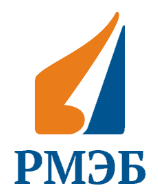ELLIPTICALLY POLARIZED LASER-ASSISTED ELASTIC ELECTRON-HYDROGEN ATOM COLLISION IN COULOMB POTENTIAL
DOI:
https://doi.org/10.31489/2021No4/82-87Keywords:
elliptical polarization, differential cross-section, Born first approximation, Volkov wave function.Abstract
The advancement of laser technology is causing the research field of optics to become more active, and with the help of advancement of technology, more detailed information can be obtained. The primary goal of this work is to calculate differential cross section by using a mathematical model in presence of coulomb potential and elliptically polarized beam with single photon absorption. The developed model shows the differential cross section increases with wavelength and decreases with electron energy with elliptically polarized beam. The differential cross section become maximum at 1.56 radian polarized angle and minimum at -1.56 radian polarized angle. The observation is based on 1.5eV laser photon energy, laser field intensity〖 10〗^14 Wcm^(-2), polarized angle 1.56 radian angle, and electron energy 0 to 600eV. Using the born first approximation and the Volkov wave function, the developed equation is obtained. The numerically obtained differential cross section in this work is approximately 10^(-19) m^2to 10^(-20) m^2, which is less than the differential cross section obtained by Flegel et al. (2013), which is approximately 10^(-17) m^2.
References
"1 Mason N.J. Laser-assisted electron-atom collisions. Rep. Prog. Phys. 1993, Vol. 56, pp.1275-1346.
Kroll N.M., Watson K.M. Charged-particle scattering in the presence of a strong electromagnetic wave. Phys. Rev. A. 1973, Vol. 8, Is.2, pp.804-809.
Yadav K., Nakarmi J.J. Free-free scattering theory of the elastic scattering of an electron. Int. J. Phys. 2015, Vol.3, pp.32-39.
Sinha C., et al. Laser-assisted free-free transition in electron-atom collisions. Phys. Rev. A. 2011, Vol. 83, Iss.6, pp.1-3.
Mittleman M.H. Introduction to the theory of laser-atom interactions. Springer Science and Business Media, Switzerland, 2013, 198 p.
Flegel A.V., et al., Control of atomic dynamics in laser-assisted electron-atom scattering through the driving-laser ellipticity. Phys. Rev. A. 2013, Vol. 87, Is.3, pp.1-5.
Mason N.J., Newell W.R. Simultaneous electron-photon excitation of the helium 23S state. J. Phys., B. 1987, Vol.20, Is.10, pp.323-325.
Wallbank B., et al. Simultaneous off-shell excitation of He 23S by an electron and one or more photons. Z. Phys. D At. Mol.Clusters.1988, Vol.10, Is.4, pp.467-472.
Makhoute A., et al. Electron-impact elastic scattering of helium in the presence of a laser field: non perturbative approach. J. Phys. B: At., Mol. Opt. Phys. 2016, Vol.49, Is.7, pp.1-30.
Agueny H. et al. Laser-assisted inelastic scattering of electrons by helium atoms. Phys. Rev. A. 2015, Vol. 92, Is.1, pp.1-5.
Makhoute A., Agueny H., Chqondi S. Floquet theory in electron-helium scattering in Nd: YAG laser field. Opt. Photonics J. 2013, Vol. 3, pp.18-27.
Wallbank B., et al. Simultaneous electron-photon excitation of He23S: an experimental investigation of the effects of laser intensity and polarisation. J. Phys. B: At., Mol. Opt. Phys. 1990, Vol.23, Is.17, pp.2997-3000.
Volkov D.M. The solution for wave equations for a spin-charged particle moving in a classical field. Z. Phys. 1935, Vol.94, pp.250-260.
Watson G.N. A treatise on the theory of Bessel functions. Cambridge University Press. (1995).
Yadav K. Theoretical study of multi-photons ionization of hydrogen atom by nonperbative method with intense laser pulse, PhD Thesis, Tribhuvan University, Nepal 2016.
Flegel A.V. et al. Analytic description of elastic electron-atom scattering in an elliptically polarized laser field. Phys.Rev. A, 2013, Vol.87, Is.1, pp.2-6.
Sprangle P., Hafizi B. High-power, high-intensity laser propagation and interactions. Phys. Plasmas. 2014, Vol. 21, pp.1-2.
"













